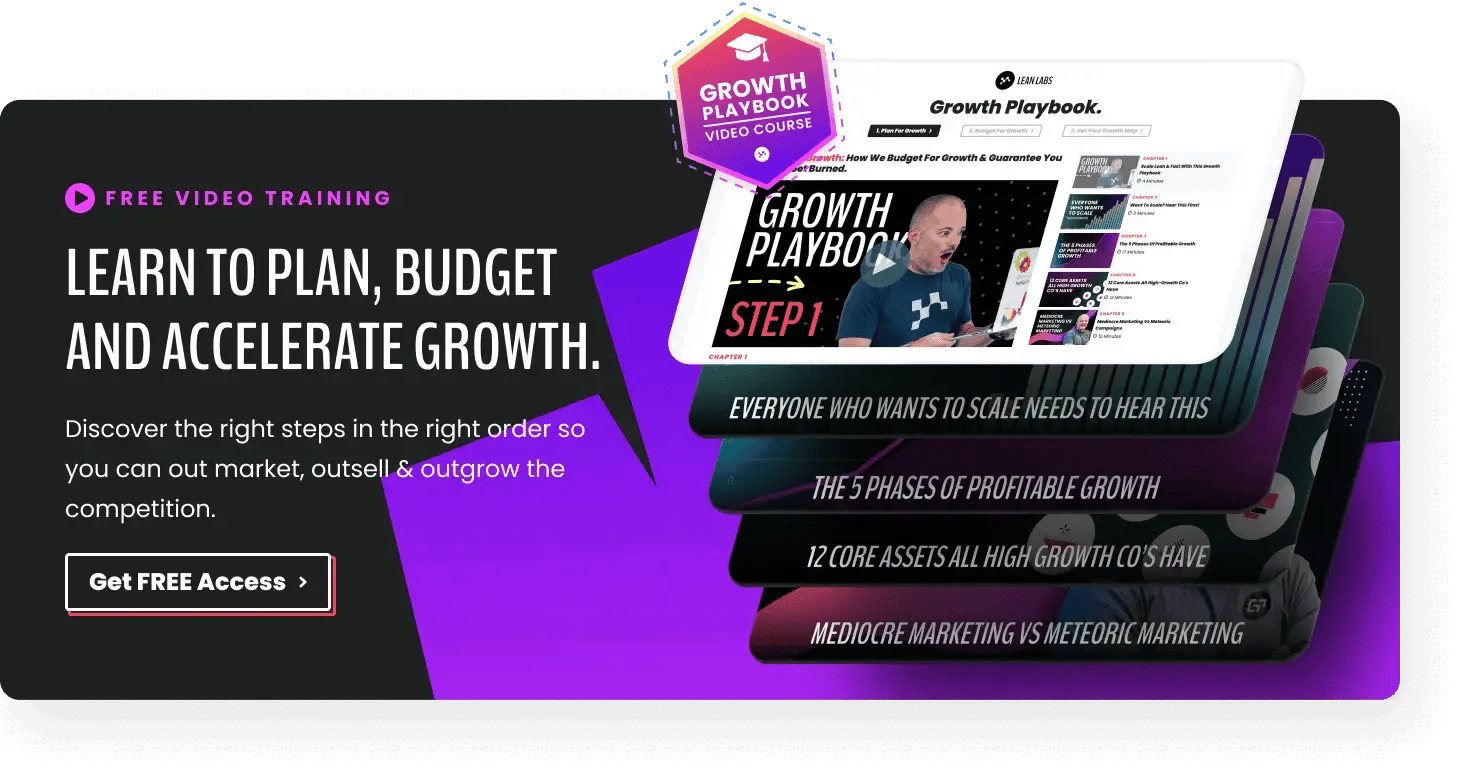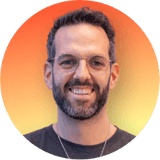-
The Ultimate 6-Step SaaS Go-to-Market Strategy
-
1. Discover Your Target Audience
-
2. What Other Solutions Are There?
-
3. Define the Buyer's Journey
-
4. Develop a Pricing Strategy
-
5. Decide on Your Growth Framework
-
6. Determine the Metrics You'll Use for Success
-
A SaaS Go-to-Market Strategy is a Roadmap to Success

SaaS Go-to-Market Strategy: 6 Step Guide
"I've got this amazing product! It's going to disrupt the market."
We've heard this many times. "Great, what's your go-to-market strategy?"
"..... Well, we'll just set up a website and start selling! Easy!"
The best product in the world won't sell by itself. Yet it's a mistake many companies make, and many great ideas never see the light of day.
You've got to get your product or service in front of the right people and compel them to take action.
The SaaS industry is growing exponentially; it's increased in size by around 500% over the past seven years. How do you stand out with so many products entering the market every year?
To stand out from the crowd, you need to make sure your product fits in the market, that it's different enough to make an impact, and that it’s the best possible solution for the specific people you seek to serve.
This article provides a 6-step guide to a bullet-proof SaaS go-to-market strategy.
If you follow these proven steps, you will dramatically increase your chances of finding traction with your ideal customers and achieving massive growth for your business.
1. Discover Your Target Audience
We say discover because you'll have to do some discovery work.
When you get specific about who your product is for and why it will help them, you can start to paint a picture of what your ideal client profile looks like.
You can start with a blank canvas when you're just starting out and bringing a new product to market. Or if you already have an audience and other products, talk to them.
When thinking about who you want to target, answer the following questions
- What does their world currently look like?
- What's changing in their world that your product can help them navigate?
- What problems are they facing?
Don't guess! Talk to real people. Many people want to be helpful, and asking them about themselves, showing genuine concern and interest, helps to build trust.
- What solution are they currently using?
- What do they like and dislike about their current solution?
- What would help them achieve their goals and desires?
You should also clearly understand demographic, firmographic, and technographic data.
- Demographic: their location, role or title, and industry.
- Firmographic: type of organization, number of clients, revenue, who their competitors are.
- Psychographic: their dreams, desires, how they want to work, where they want to go, and what they believe.
- Technographic: whether they're open to adopting new technology or they've used premium tools in the past.
Product-Market Fit
When your product is perfect for your customers, that's true product-market fit. It's made just for them.
It solves their needs, and when your customers love your product so much they become brand advocates, you know you're on to something.
In an ideal scenario, you want to find a market segment that you can dominate. For example, Google dominates search engines, and Coca-Cola dominates soda production.
Of course, you don't need to think as big, but you must try to find a way to penetrate and dominate the market segment you want to sell in.
Start thinking about your product. Do you have a solution to your ideal client's problem? And do you have any proof that your solution works?
Then you have to think about what makes you different from your competitors. And you will have them. The SaaS world is growing rapidly.
It's projected that 85% of software businesses will use a SaaS product by 2025.
You can attract your ideal customers with a specific value proposition and compelling messaging.
Related: How to Market Your SaaS Business: 7 Proven Strategies
Message-Market Match
"Copy cannot create desire for a product. It can only take the hopes, dreams, fears, and desires that already exist in the hearts of millions of people, and focus those already-existing desires into a particular product." – Eugene Schwartz, Breakthrough Advertising
The first line is the most important. Copy cannot create desire for a product.
But you need the language that makes potential customers want to learn more about your product, take the next step, and ultimately convert.
Buyers are savvy. They do a ton of research online before talking to sales.
In some cases, they might already be considering options, so it's crucial to clearly define your value proposition and make sure buyers see and understand it.
Can they see themselves in your story? There are likely three responses:
- So what? What's next? Why is your product different from competitors?
- That's me! Your customer sees themselves in your story and wants to know more about how you can help them.
- BS, I don't believe you. If your customer thinks your product is too good to be true, you'll need to provide proof.
Write a Killer Value Proposition
Considering the points above, it's time to write a killer value proposition. Forget about the features. When a visitor comes to your website, you only have a few seconds to convince them to stay.
How will your product make a difference for your buyer? Better still, who will they be once they use your product? You're halfway there if you can get them to believe in a desired future state.
Keep it short and straightforward. Your core message must be easy to read, understand, and explain to others.
Related: 16 Companies Who Absolutely Nailed Their Unique Value Proposition
An incredible value proposition and compelling CTA are a winning combination.
2. What Other Solutions Are There?
Your solution is one of many out there. You will have competition. Even if your product is unique, your ideal clients already use something to solve their problems.
Whether they're using a competitor's software, a spreadsheet, or pen and paper, they are currently using an alternative. The key is to position your solution so that it’s perceived as better for them.
Research your competition. What do they offer? Who do they target? You can find out most things from a Google search and your competitor's website.
If they have a blog, search for common keywords and see how they position their product, what they talk about, and how they direct customers to work with their company.
Find the gaps. Where are your competitors failing to help their customers? Search public reviews on websites like Capterra and G2 to discover what customers say.
You can use negative reviews to glean insight.
For example, if they have poor reviews for customer service, you can make your competitive advantage stellar customer service.
Now you can use specific language and give customers incentives to switch to your solution. Promise to make it easy and offer robust onboarding, and then deliver.
3. Define the Buyer's Journey
Every buyer goes through a journey before becoming a customer. You need to develop an understanding of the process by which your ideal client moves through the stages:
Unaware: Not aware yet that they have a problem
Problem Aware: They have the symptoms of a problem and are asking a lot of questions
Solution Aware: They're looking for a solution to their problem
Product Aware: Your prospect is looking at solutions, yours among them
Motivated to Buy: The trigger event that makes them reach out to you
Sold: They've chosen your solution and are now a client.
If you’ve completed step one, you know who your ideal client is. You know how you can help them and why your competitors aren't providing the value your customer wants.
Now it's time to define how they will come to purchase your product.
For example, they might start by reading your blog. You place a compelling offer and CTA that they convert on.
They download your lead magnet, and you nurture them with an email marketing campaign. You deepen the relationship and finally get your prospect on a sales call with an offer.
This is only one route. The route you decide to use depends on your product and which growth strategy you choose to use (more on that later).
How do you move prospects along the buyer journey? We believe the best play is compelling content. For example, you can create content for every buyer journey stage.
Attract
You're trying to earn your prospect's attention. To do so, use relevant and valuable content to help them learn about your product.
Remember, your prospects want to understand their problem and find someone who empathizes with their situation.
Helpful content starts to build trust. If your potential customer starts to move through their journey, they might look for more content from you that further helps and educates them.
Engage
When your prospect is in the consideration stage of their journey, they've defined their problem and are looking for solutions. Engage with them in meaningful ways.
Use well-crafted emails, and become a resource and a guide.
Other helpful content here are demo videos, free trials, case studies, and testimonials that express how someone can solve their problems using your software.
They also help to entertain and inspire your audience.
Delight
The key here is to go above and beyond. When you provide an outstanding experience for buyers, including frictionless sales and onboarding support, you'll start to build a lasting relationship.
You've got to be human and helpful. Respond to queries, questions, and concerns promptly. Send regular emails during onboarding offering tips and tricks on how to get the most out of your product.
Be sure to personalize their experience, too.
Your best customers turn into raving fans who are more likely to share your content, especially if it's relevant and valuable.
Related: SaaS Content Writing: How to Attract, Engage, and Delight Your Customers
4. Develop a Pricing Strategy
You might think that with all the competition out there, you need to come in at a low price. But a race to the bottom is not worth winning. The ideal scenario is to have fewer customers you can provide stellar service to, paying a higher price.
Buyers will equate price with value.
Think about it. If you invest a lot of money in something, do you value it more?
Next, think about where your offer fits in the market.
You can't be too outlandish with your pricing - but you should tie your pricing to the value you provide and have the right messaging so that customers realize it's the correct price point and they're getting tremendous value.
Calculate how much your product helps them improve profit margins, whether that's in time savings, reduced overhead, or increased revenue.
Generally, a SaaS product replaces a 'service' completed by an internal employee or external agency.
Set your price based on what they're replacing, and make sure you provide better value.
There are other ways to think about your pricing model
- Number of users
- Number of features
- Credit-based pricing
- Tier-based pricing
Lastly, do you want to provide a subscription service or a one-time purchase? What you decide will change how you market your product and engage with customers.
You might also choose a hybrid model, including an implementation fee and an ongoing subscription.
Pro tip: 85% of customers will pay more for a SaaS product if there is a high-quality customer experience.
5. Decide on Your Growth Framework
Depending on your product, you can use a few different growth models or frameworks. Which one will work best for you?
Product-Led Growth
With a product-led growth model, you let customers experience the product themselves and help to optimize their experience. You might offer a free trial or the use of a freemium product.
The trick here is to deliver an incredible user experience with robust support so that it makes sense for customers to upgrade to your paid plans.
You can do this by providing in-depth onboarding and tutorials on how to get the most out of the features.
Be ready to offer support. You'll get a lot of questions and maybe even concerns. How fast and how accurately you respond could make or break the relationship.
It's essential that customers don't feel like you're just trying to get them to upgrade by holding back features. But you'll need to balance that with getting them excited about the paid version of your product.
When you ask for feedback, you create a loop. And if you deliver an excellent product, customers are likely to tell their friends and colleagues who might benefit from your product.
This is how you can optimize the viral coefficient.
Lastly, avoid getting too attached to early versions of your product. Instead, adopt the lean methodology.
Iterate rapidly based on user feedback (both observed and vocalized) to improve the product's ability to solve the core problem for best-fit users.
Community-Led Growth
First, make sure to distinguish your audience from your community. Your audience might be vast, but your community is focused.
Having an audience requires you to talk to the members; in a community, the members talk to each other.
You want to grow a user base that loves and supports your service to drive referrals. You also want to build long-term relationships with your users so you can connect with them and get early feedback.
But community-led growth is about creating a space and taking up a little corner of the internet. For example, you could start a group like Exit Five.
Dave Gerhardt, author and entrepreneur, started Exit Five to give B2B marketing professionals a place to get advice, get unstuck, discover untapped channels, and find inspiration.
He currently has over three thousand paying members.
A community helps you become a thought leader. When you start a group around an idea and facilitate the direction and expansion of the group, you can feed people into your business.
For example, Figma built a community around design and UX, not around Figma.
Sales-Led Growth
Your sales team is the driver of revenue in this scenario. Sales cycles are long, and your sales team can offer multiple touchpoints to guide users toward a purchase.
Customers usually won't use the product until they've spoken to sales and signed a contract.
This approach allows sales to take the lead when introducing a new product.
Sales representatives reach out to potential customers, create value by positioning your product and educate customers on how it benefits them.
This model is supported well by account-based marketing (ABM), which allows you to weed out poor-fit companies so that marketing and sales can align.
Marketing-Led Growth
With marketing-led growth, you use your website, blogs, paid ads, and social media to attract customers. The crucial element here is to produce, distribute, and repurpose helpful and relevant content.
It works best for brands that want to drive growth through organic channels. The play here is to attract the right traffic by producing content that helps potential customers on the buyer journey.
You can build trust by educating and engaging your audience.
You can also get customer feedback and generate referrals with the right strategy.
Once a prospect is sales-ready, you can hand them off to the sales team. But you don't just hand them off and go back to generating leads.
It's essential to keep marketing to customers throughout the sales funnel. To do so, you'll need marketing and sales teams to align.
6. Determine the Metrics You'll Use for Success
You must know what success looks like to go to market. Whether that's a certain number of users or a revenue goal, you need to set SMART goals and determine your key performance indicators (KPIs).
A SMART goal is Specific, Measurable, Attainable, Relevant, and Time-Bound. "We want more traffic!" is not a SMART goal.
"Our traffic goal is to increase traffic by 5% every week by producing 2 pieces of helpful and relevant content" is a better goal.
Set SMART goals around awareness, acquisition, activation, revenue, retention, and referrals.
We dig deeper into the six levers of growth in The 6 Growth Marketing Metrics Every Business Needs to Track (& How to Track).
Conversion goals are the north star of any marketing strategy. If you're not growing, you're dying.
It's crucial to align the entire growth team around the same metrics and stay focused on the levers that will move the business forward.
A SaaS Go-to-Market Strategy is a Roadmap to Success
Use this 6-step guide to confidently go-to-market. It seems a lot of work at the outset, but it could lead to 10x growth if you do it properly.
Wasting money and resources because you don't have a strategy will cost far more in the long run.
At Lean Labs, we believe in strategy first. We work with deserving SaaS brands daily with the sole aim of driving growth.
For all of our clients, we know the following:
- It's crucial to create a blueprint replicating high-growth companies' go-to-market strategies.
- Then, you can build an engaging, high-conversion buyer journey that turns your website into a profitable growth funnel.
- Finally, as an outsourced growth team, we deliver substantial growth shifts with performance guaranteed.
If you want to see exactly how we develop effective go-to-market strategies for our clients and take the right steps in the right order to reliably scale growth, check out the Growth Playbook, our most valuable free resource for SaaS startups and scaleups.






